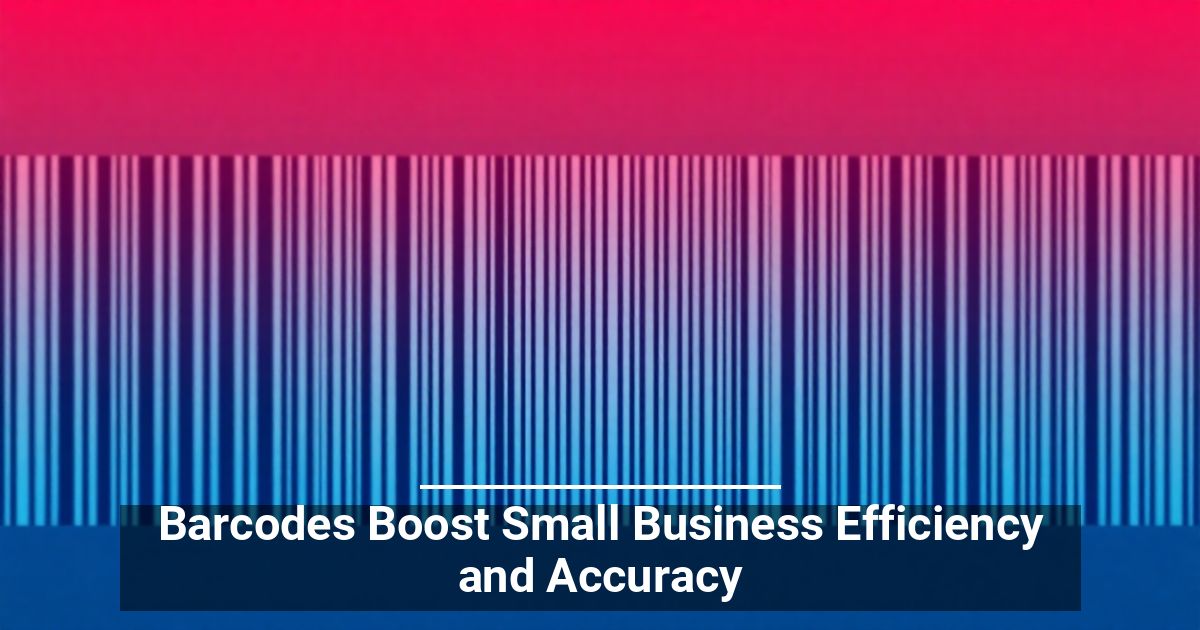
How Barcodes Help Small Businesses Improve Accuracy and Efficiency
Have you ever wondered how small changes could make a big difference in your operations? Barcodes are one of those tools that seem simple but deliver powerful results.
What Is a Barcode?
A barcode is a combination of black lines, spacing, and numbers that represents unique product or transaction data. Scanners connected to computers can read the code and retrieve the relevant information instantly.
While most people associate barcodes with retail checkouts, they are also used for rental cars, medical records, ID cards, travel documents, and more. In many of these cases, barcodes help identify individuals or transactions securely and efficiently.
Revolutionizing Industries With Barcode Scanning
Barcodes are more versatile than the average small business owner might assume. In warehouses, they help track:
-
Quantity
-
Location
-
Item size
-
Movement and reorder needs
Clinics and healthcare providers use barcodes on medical tags to reduce the chance of patient mix-ups. Retailers rely on barcode scanners to speed up checkout and ensure pricing accuracy. Manufacturers use them to trace products from production through delivery and after-sale service.
Any process that involves tracking, tagging, or managing assets can benefit from barcode technology — especially when aligned with infrastructure modernization efforts such as cloud migration services and operational safeguards supported through business continuity planning.
Is Implementation Worth It for Small Businesses?
Some smaller companies may worry about the cost or complexity of barcoding systems. However, the long-term benefits make implementation a valuable investment.
Increased Productivity
Manual data entry slows your team down and increases the risk of miscommunication. Even small delays can compound into lost revenue. With barcodes, your team can focus on strategic tasks while routine processes are handled automatically.
Operational Accuracy
According to a study titled “Observations on Typing from 136 Million Keystrokes,” even top data-entry professionals average one error per 250 keystrokes.
Barcode scanning, on the other hand, has an average error rate as low as one in 5,000 to over 36 trillion characters. That’s a difference worth noting when accuracy impacts customer service, billing, or compliance.
Real-Time Data
Each scan immediately updates inventory or sales data within your point-of-sale or stock management system. This gives managers and decision-makers instant insight into what's moving, what needs restocking, and where adjustments are necessary.
This kind of insight is often part of the process when working through IT consulting and project management services to improve system workflows and technology alignment.
Scalability
As your business grows, your barcode system can grow with it. Modern platforms allow you to add locations, users, and features with ease. Whether expanding or downsizing, barcode tools help maintain consistency and control across operations.
Unlock Efficiency With Every Scan
Why wait to simplify your operations? Barcodes streamline inventory tracking, reduce errors, and improve your overall workflow. Fast, accurate, and scalable — barcodes are a small tool with a big impact for small businesses.
This article contains content originally licensed from Article Aggregator and has been adapted and expanded by our team to better reflect our services and audience. The embedded source link is included as part of the original licensed material.








